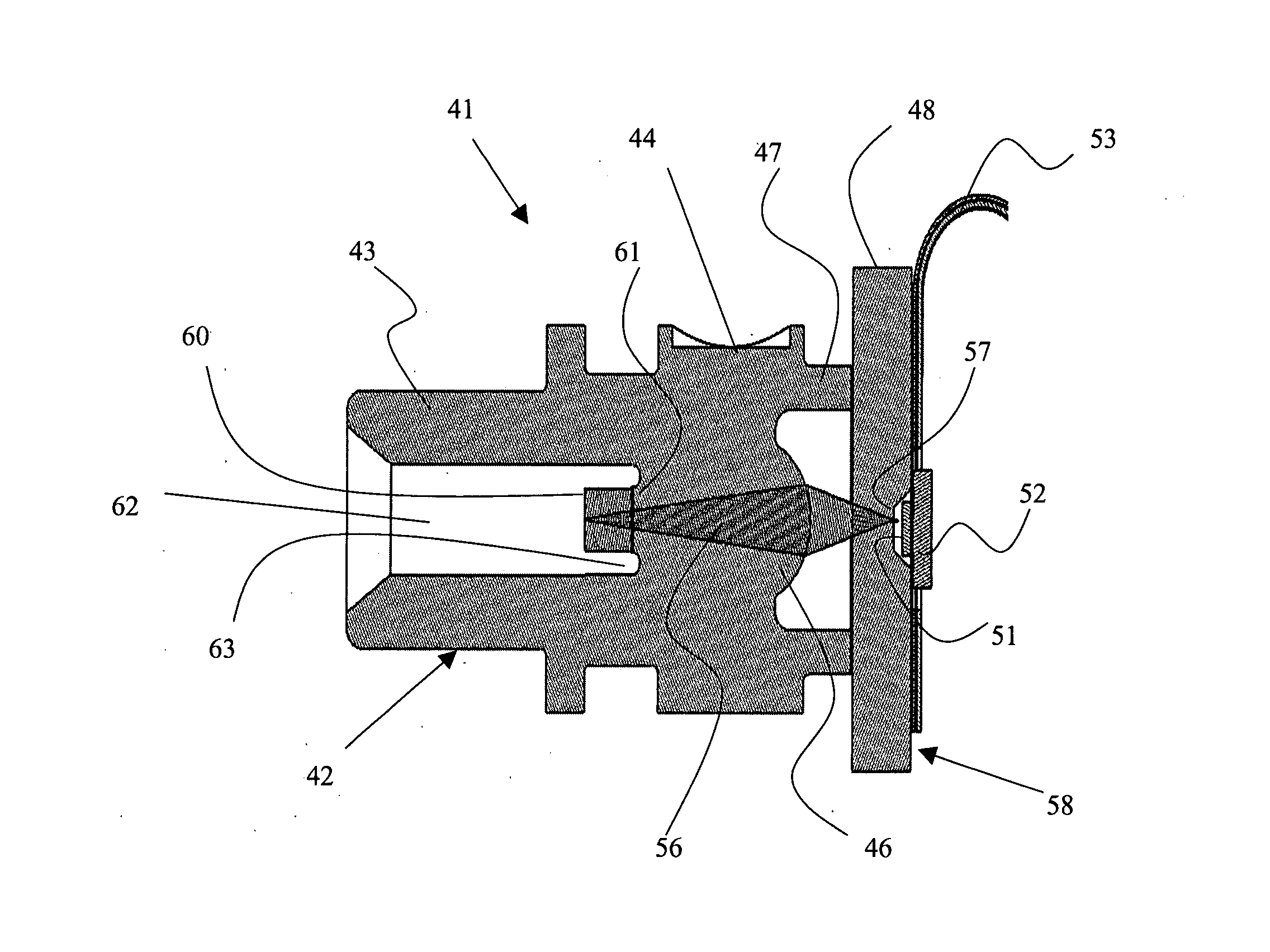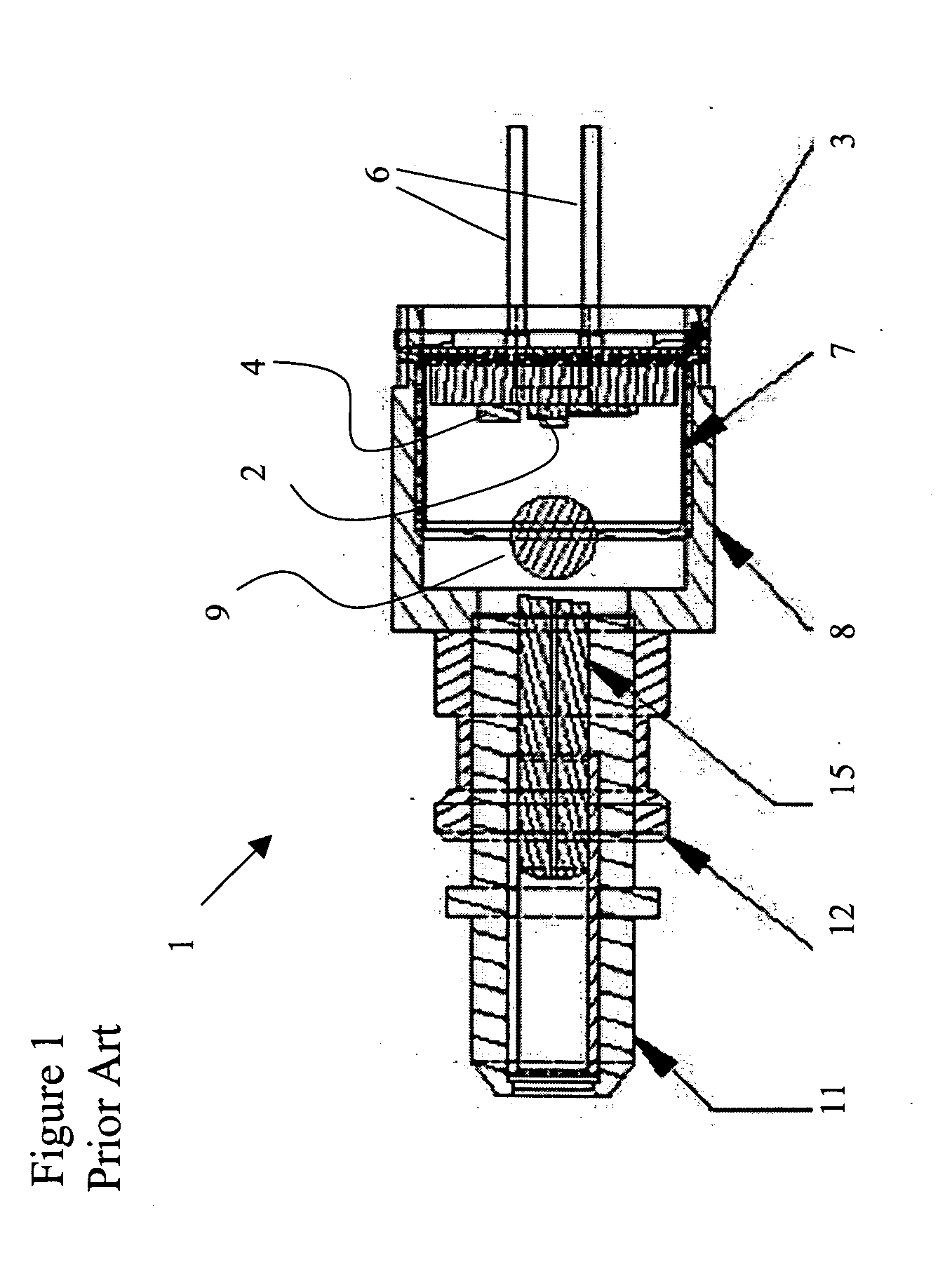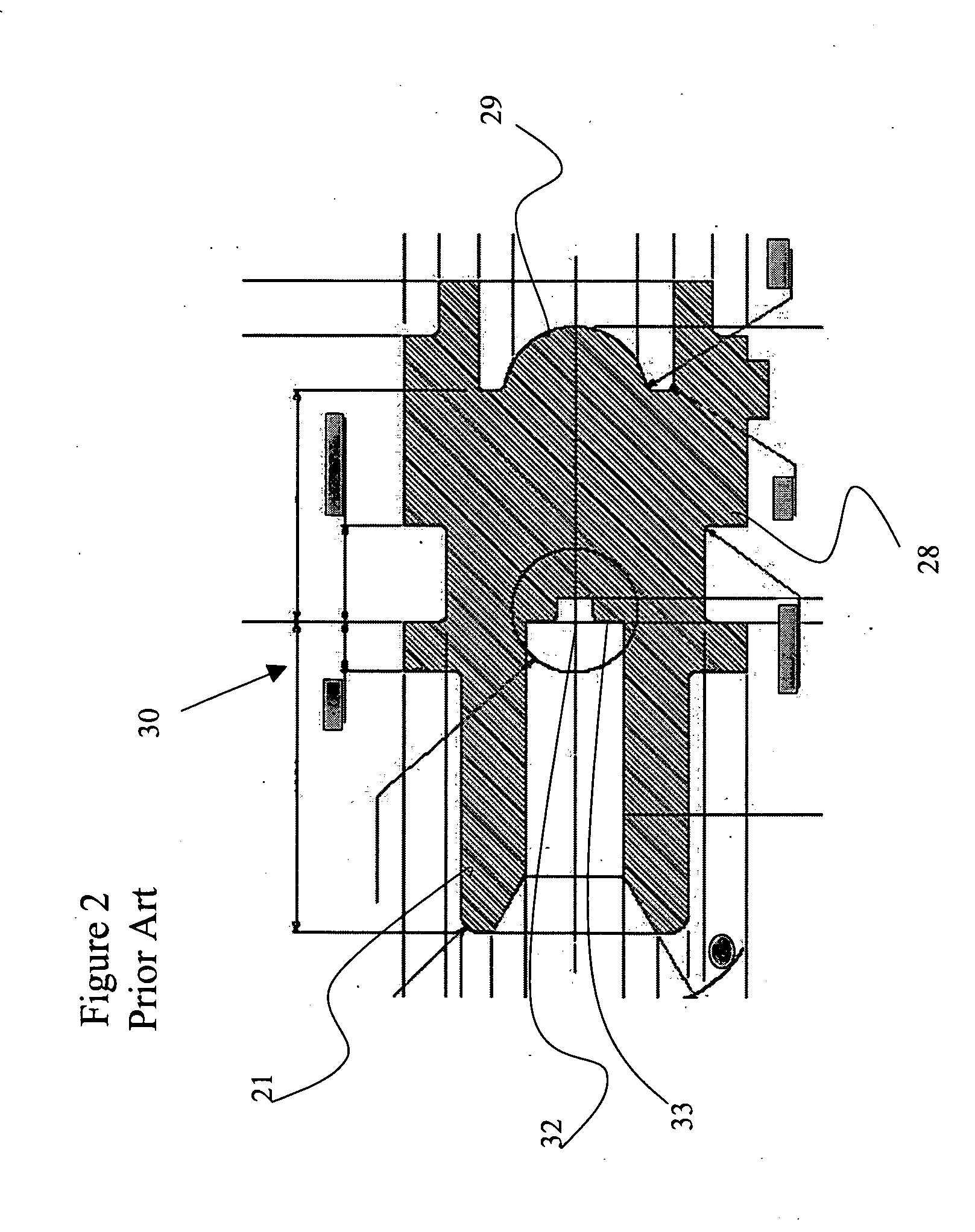Receiver optical sub-assembly with reduced back reflection
a technology of back reflection and optical sub-assembly, which is applied in the field of rosa with reduced back reflection, can solve the problems of back reflection being a source of optical noise, the level of back reflection, and the problem of back reflection still exist, so as to reduce any light coupling
- Summary
- Abstract
- Description
- Claims
- Application Information
AI Technical Summary
Benefits of technology
Problems solved by technology
Method used
Image
Examples
Embodiment Construction
[0019] With reference to FIG. 3, the ROSA assembly, generally indicated at 41, according to the present invention includes a molded plastic one-piece front-end unit 42 defining an optical connector 43, a housing 44, a focusing lens 46, and a mounting collar 47. The front-end unit 42 is constructed from an optical grade plastic, e.g. ULTEM1010. A substrate 48 is fixed to the mounting collar 47 for supporting a photo-detector 51 and other electronic devices, i.e. trans-impedance amplifier 52. Electrical leads, preferably in the form of flexible electrical cable 53, transmit electrical information to and from the photo-detector 51 and the other electronic devices, e.g. trans-impedance amplifier 52. The substrate 48 provides a stiffener for the flexible electrical cable 53. In a preferred embodiment, the substrate 48 is transparent to optical signal 56, thereby enabling the optical signal 56 to pass therethrough to the photo-detector 51. The photo-detector 51 is flip-chip mounted to the...
PUM
 Login to View More
Login to View More Abstract
Description
Claims
Application Information
 Login to View More
Login to View More - R&D
- Intellectual Property
- Life Sciences
- Materials
- Tech Scout
- Unparalleled Data Quality
- Higher Quality Content
- 60% Fewer Hallucinations
Browse by: Latest US Patents, China's latest patents, Technical Efficacy Thesaurus, Application Domain, Technology Topic, Popular Technical Reports.
© 2025 PatSnap. All rights reserved.Legal|Privacy policy|Modern Slavery Act Transparency Statement|Sitemap|About US| Contact US: help@patsnap.com



